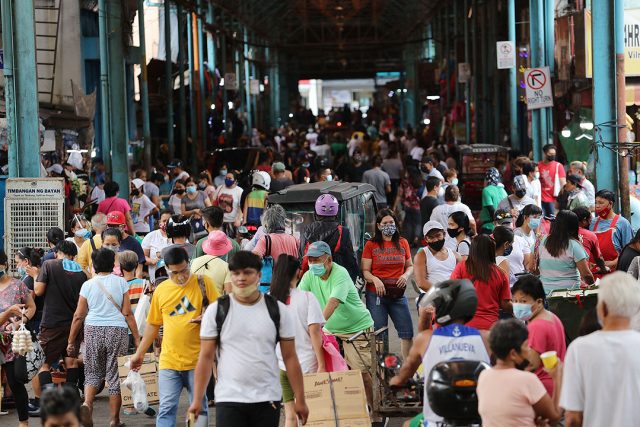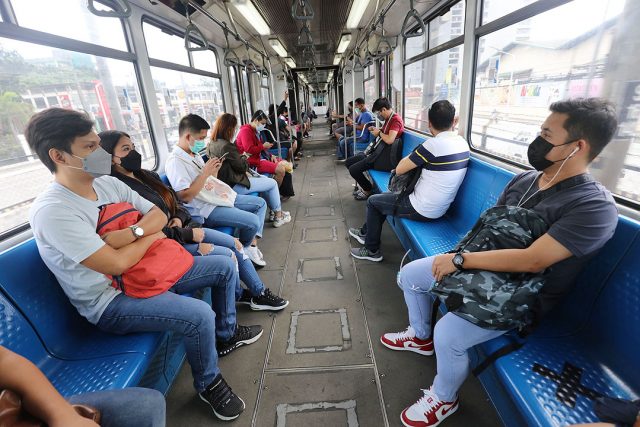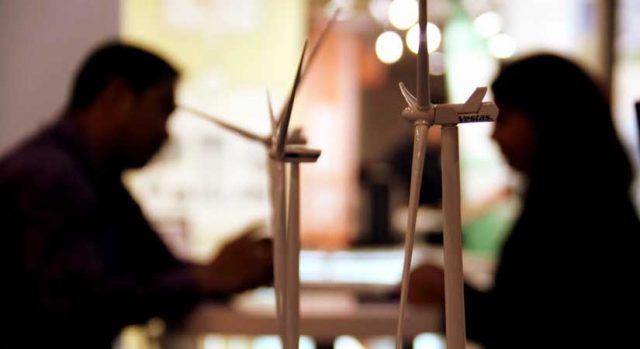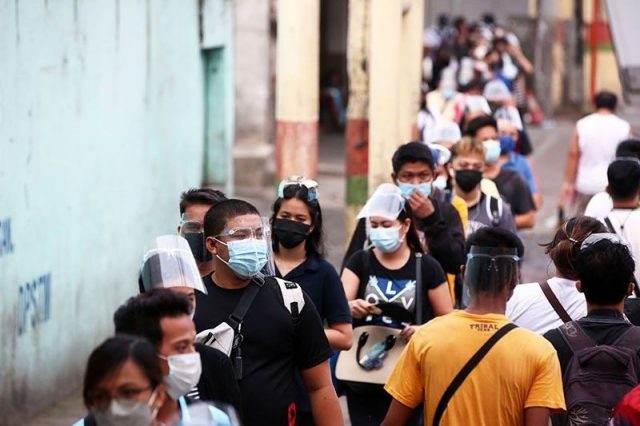Coronavirus infections in the Philippines hit another record on Friday at 37,207, as the country struggles to contain a fresh surge in cases spurred by the highly mutated Omicron variant.
This brought the total to 3.13 million, while the death toll increased by 81 to 52,815, the Department of Health (DoH) said in a bulletin. Recoveries rose by 9,027 to 2.81million
President Rodrigo R. Duterte kept the alert level for Manila, the capital and nearby cities at No. 3 until Jan. 31, his spokesman Karlo Alexei B. Nograles told a news briefing.
The agency said 47.3% of 81,737 samples on Jan. 12 tested positive for the coronavirus, way above the 5% threshold set by the World Health Organization (WHO).
Of the active 265,509 cases on Friday, 8,325 did not show symptoms, 252,502 were mild, 2,913 were moderate, 1,469 severe and 300 were critical.
DoH said 98% of the infections occurred from Jan. 1 to Jan. 14. The top regions with new cases in the past two weeks were Metro Manila with 16,824, Calabarzon with 8,580 and Central Luzon with 4,052 infections. It added that 26% of deaths occurred in January, 6% in December and 17% in October.
It said 104 duplicates had been removed from the tally, 67 of which were reclassified as recoveries and two were tagged as deaths. Fifty-eight recoveries were relisted as deaths. Eight laboratories failed to submit data on Jan. 12.
The Health department said 46% of intensive care unit beds in the country had been used, while the rate for Metro Manila was 55%.
Mr. Nograles said Metro Manila would remain under Alert Level 3 because its healthcare use had not hit 71%, the threshold required for Alert Level 4. “We are avoiding Alert Level 4 because that would mean that our healthcare utilization rate is high.”
New infections in Metro Manila were not accompanied by a rise in severe COVID-19 cases and deaths likely due to the region’s high vaccination rate, Health Undersecretary Maria Rosario S. Vergeire told the same briefing. Omicron was also milder than other early variants, she added.
“We saw a phenomenon called decoupling in the National Capital Region,” she said. “This is when a rise in cases does not translate to a rise in the number of people who get hospitalized from severe or critical illness and death.”
OCTA Research Group fellow Fredegusto P. David said Metro Manila’s virus reproduction number had fallen to 3.77 on Jan 10 from 6.12 a week earlier.
“We are not out of the woods yet, and data in the next few days will clarify the trends,” he said in a report posted on Twitter. “Efforts from the public must be sustained so that the National Capital Region’s (NCR) new case reports will start decreasing.”
The government earlier placed 28 other areas under Alert Level 3 starting Friday. Alert Level 3 bars face-to-face classes for basic education unless approved by the government.
Meanwhile, Mr. Nograles said the government has placed Antigua and Barbuda, Aruba, Canada, Curacao, French Guiana, Iceland, Malta, Mayotte, Mozambique, Puerto Rico, Saudi Arabia, Somalia, Spain and US Virgin Islands under the country’s travel red list from Jan. 16 to 31. Foreign travelers from these territories will be barred entry, he said.
On the other hand, Filipinos from red-listed or high-risk countries may now come home via commercial flights and not just through so-called Bayanihan flights, he said.
Also on Friday, the Supreme Court rescheduled the 2020/2021 bar exams to Feb. 4 and 6 from Jan. 23 and 25.
“Given the current infection rate and quarantine situation of bar personnel, 16 of the 31 teams that will be deployed will be critically understaffed if the current schedule were maintained,” it said in a statement. — Kyle Aristophere T. Atienza












